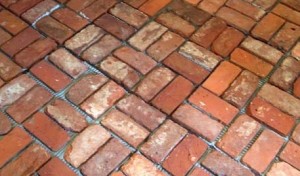Brick Flooring
Brick flooring is commonly provided in warehouses, stores and godowns or in places where heavy goods are stored. The brick flooring may be done with brick laid flat or on edge arranged in herring bone fashion or set at right angle to the walls. The earth filling under floor is well compacted first and thereafter 4″ to 6″ thick layer of cement or lime concrete is laid over the entire area of floor. This layer is known as subgrade. The floor is laid directly over the subgrade. The slope required to be given to the floor to take care of floor washing etc., is provided in subgrade itself. Before using, the bricks should be properly soaked and wetted in water.

The bricks are laid on edge on 12 mm. thick mortar bed in such a manner that all the joints are full of mortar. Where the floor has to be plastered or painted, all the face joints should be raked to a depth of about 15 mm. during the progress of work (when the mortar is green). This is necessary to ensure adequate bond between the flooring and the mortar of pointing or plastering. In case, however, pointing or plastering is not needed, the joints need not be raked and instead rendered flush and finished during laying of bricks.
The brick flooring should be cured for a minimum period of seven days before use.
Merits of brick flooring:
- It is durable and sufficiently hard.
- It is cheaper than cement concrete, wooden or mosaic flooring.
- It is non-slippery.
- It is easily repairable.
Demerits
- It is absorbent.
